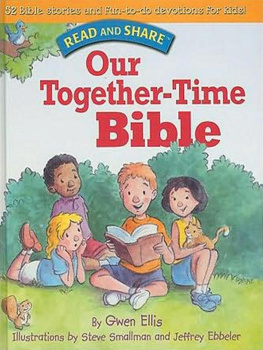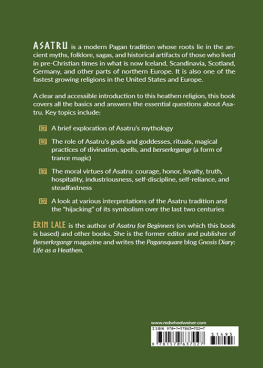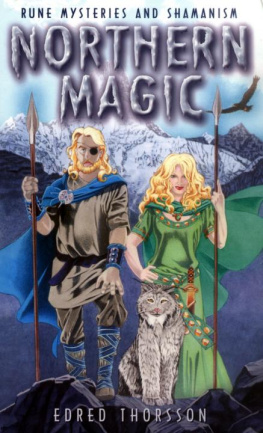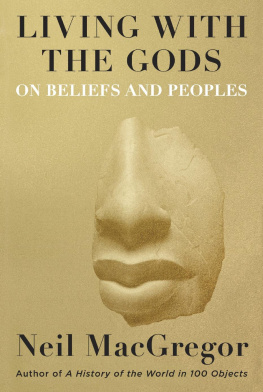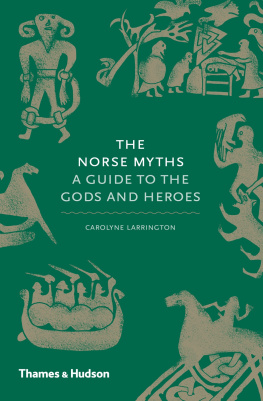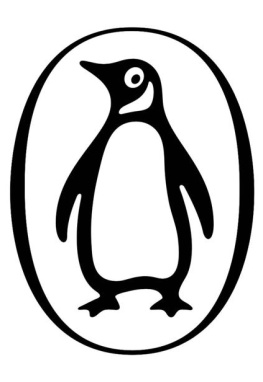H.R. Ellis Davidson - Gods and Myths of Northern Europe
Here you can read online H.R. Ellis Davidson - Gods and Myths of Northern Europe full text of the book (entire story) in english for free. Download pdf and epub, get meaning, cover and reviews about this ebook. year: 1965, publisher: Penguin Books, genre: Religion. Description of the work, (preface) as well as reviews are available. Best literature library LitArk.com created for fans of good reading and offers a wide selection of genres:
Romance novel
Science fiction
Adventure
Detective
Science
History
Home and family
Prose
Art
Politics
Computer
Non-fiction
Religion
Business
Children
Humor
Choose a favorite category and find really read worthwhile books. Enjoy immersion in the world of imagination, feel the emotions of the characters or learn something new for yourself, make an fascinating discovery.
- Book:Gods and Myths of Northern Europe
- Author:
- Publisher:Penguin Books
- Genre:
- Year:1965
- Rating:3 / 5
- Favourites:Add to favourites
- Your mark:
- 60
- 1
- 2
- 3
- 4
- 5
Gods and Myths of Northern Europe: summary, description and annotation
We offer to read an annotation, description, summary or preface (depends on what the author of the book "Gods and Myths of Northern Europe" wrote himself). If you haven't found the necessary information about the book — write in the comments, we will try to find it.
Gods and Myths of Northern Europe — read online for free the complete book (whole text) full work
Below is the text of the book, divided by pages. System saving the place of the last page read, allows you to conveniently read the book "Gods and Myths of Northern Europe" online for free, without having to search again every time where you left off. Put a bookmark, and you can go to the page where you finished reading at any time.
Font size:
Interval:
Bookmark:
PENGUIN BOOKS
Hilda Ellis Davidson studied Anglo-Saxon and Old Norse under the Chadwicks at Newnham College, Cambridge, where she took Firsts in English Literature and what was then known as Archaeology and Anthropology. She received her Ph.D. in 1940 for a thesis on beliefs about the dead in Old Norse literature. She lectured in English Language and Literature at Royal Holloway College and Birkbeck College in the University of London, and was elected a Fellow of the Society of Antiquaries in 1950. In 1973 she became a Fellow of Lucy Cavendish College, Cambridge, where she was Vice-President from 1975 until 1980. She was President of the Folklore Society from 1973 to 1976, and General Editor of the nineteen Mistletoe Books published between 1974 and 1984. She is married, with two children and ten grandchildren, and lives in Cambridge.
Hilda Davidsons other publications include The Road to Hel (1943), The Sword in Anglo-Saxon England (1962; 1994), The Viking Road to Byzantium (1976), Patterns of Folklore (1978), Commentary on Books IIX of Saxo Grammaticus (1980), Katherine Briggs, Storyteller (1986), Myths and Symbols in Pagan Europe (1988), The Lost Beliefs of Northern Europe (1993), and numerous articles in books and periodicals. She continues to work on the pre-Christian religion and folklore of north-western Europe.
. The unknown composer of the poem known as The Seafarer.
. Bedes Ecclesiastical History, 11, 15.
. Bede, Ecclesiastical History, 11, 13.
Kjartan said: As for me, I mean to accept the
Christian faith in Norway, on one condition, and that is that I
shall still put a little reliance on Thor next winter,
when I get to Iceland. The king said, with a smile:
You can see from Kjartans manner that he feels he
can put more trust in his strength and his weapons
than in Thor and Odin.
Laxdoela Saga
This brief survey of heathen religion in the north has shown us that certain of the gods who appear in the myths were once of considerable importance in the lives of men. In the Viking age there were four powerful deities. First Odin, god of inspiration, whether in the form of battle-frenzy, intoxication, or secret wisdom from the land of the dead. Secondly Thor, god of the sky and the thunderbolt, preserver of the community where men pitted their strength and wits against the hardship of the weather and the attacks of their enemies. Thirdly Freyr, who with his sister Freyja brought peace and prosperity to men, the blessings of fertility in the home and the field, healthy children and rich harvests. This group of deities can be traced back to the days when the Germans were a heathen people and worshipped Wodan, god of inspiration and the dead, Twaz, god of the sky and of battle, and a god of fertility, along with the goddess of many names whom the Danes called Nerthus. The symbols associated with these gods, the starry heavens and the mighty tree, the unloosing of fetters, the hammer that shattered rocks and slew giants, the ship and the wagon that brought the deity to men, the horse that galloped through the air, the spear that determined victory, the women bearing gifts all these symbols of power appear to have been known to the Germans in the early period; and to have retained something of their potency into the late Viking age, so that they have left their mark on the myths that remain to us. The background of these deities, the cosmic region surrounding the World Tree, also seems to be of great antiquity. Above was the home of the gods, below the great depths, with middle earth, the home of mankind, poised between them. The doors between the worlds were not hard to open, given the necessary knowledge and the courage to choose so perilous a path.
Many of the myths are concerned with the conception of a journey to the Other World, through the cold and darkness that acted as a barrier. The rich symbolism of roads and bridges, dark holes and caves leading to the underworld, the open burial mound, the journey through the air in bird form, all this emphasizes the belief in a passage between the worlds both for men and other beings. The creatures of the depths are strongly and vigorously portrayed in the myths. The giants, sometimes monstrous and sometimes fair to see, the wolf held in bonds, the ancient dragon in his den, the serpent encircling the world, are never long forgotten. They are continually contrasted with the realm of the gods, the shining heavens with their bright dwellings. The underworld, either below the earth or the waves, is the abode of darkness and death, threatening always to destroy the ordered world of light and overrun the inhabited earth. Yet at the same time it is the place from which new life comes, and to which the gods may look for their brides. We are reminded from time to time in the myths that the seemingly dead earth sends up shoots in spring, that wisdom may come from the sea depths, and that the characteristics of dead men appear again in their childrens children.
Finally in this picture of gods and monsters, we find the idea of the continual re-enactment, lternel retour, as Mircea Eliade calls it. The gods themselves were doomed to fall before the powers of darkness, and heaven and earth to pass away. But rebirth must follow destruction, and a newly cleansed earth and heaven emerge from the sea and the flames. The sons of the gods and the survivors of mankind would again people earth and heaven, new dwellings arise in Asgard, and green fields once more yield their harvest on middle earth.
Such is the picture which we discern at the heart of the old religion, behind the succession of rich, entertaining, and often moving myths which have survived from the northern world. It was claimed at the beginning that myths are a comment on human existence and a model of social behaviour, an attempt to define the inner realities. Although some of the surviving myths are clearly shaped by the hands of poets, scholars, and entertainers, there is much which appears to be basic material from heathen times. There is moreover a certain amount of information collected in the Edda poems, particularly that which has to do with the World Tree, the divisions between the worlds, and the dwellings of the gods, which has certainly not been put together for its value as entertainment. It has the appearance of a body of knowledge about the gods and their world brought together for purposes of memory or teaching. This enables us to correct the more frivolous impression given by some of the racier myths, products of an age when the gods offered a tempting target for northern wit.
We can see the myths as a vigorous, heroic comment on life, life as men found it in hard and inhospitable lands. The gods never cease their struggle against the creatures of cold and darkness. Thor, perhaps the best-loved deity of the north, is characteristic of the Vikings in his resolute pertinacity. The values for which he stood law and order in the free community, the keeping of faith between men were those by which the Vikings set great store, even though they themselves often appeared to the outside world as the forces of destruction unleashed. Odin represented the other side of life, the inspiration granted to the warrior and the poet, and the secret wisdom won by communication with the dead. In his cult and in the religion of the Vanir we see most clearly the shamanistic tendencies of northern religion, the emphasis on mans powers to reach out beyond this harsh and limited world. Above all, the northern myths are clear-sighted in their recognition of the reality of the forces of destruction. The fight in a narrow place against odds, which has been called the ideal of heroic literature in the north, is given cosmic stature in the conception of Ragnarok, the doom of the gods, when Odin and his peers go down fighting against the monsters and the unleashed fury of the elements. The depths and dark mysteries of the subconscious are given full recognition in the myths. The greatest terror to be faced, that of the disintegration of the mind in madness or death, is not pushed to one side. At Ragnarok a rich and wonderful world was shattered and the monsters had their fill of destruction. After that facing of reality, it was possible to see beyond the catastrophe and to imagine a new world built upon the ruins of the old.
Font size:
Interval:
Bookmark:
Similar books «Gods and Myths of Northern Europe»
Look at similar books to Gods and Myths of Northern Europe. We have selected literature similar in name and meaning in the hope of providing readers with more options to find new, interesting, not yet read works.
Discussion, reviews of the book Gods and Myths of Northern Europe and just readers' own opinions. Leave your comments, write what you think about the work, its meaning or the main characters. Specify what exactly you liked and what you didn't like, and why you think so.



